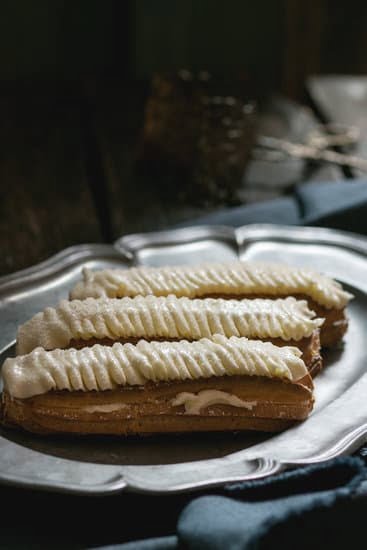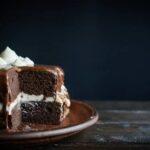Have you ever found yourself wondering, “Can I freeze a decorated cake?” Preserving the beauty and taste of a beautifully decorated cake can be a challenge, especially if you want to save it for a special occasion or simply avoid waste. This article will explore the possibilities of freezing decorated cakes, addressing common concerns and offering valuable insights on how to do so effectively.
Decorated cakes are often the centerpiece of special occasions, showcasing intricate designs and delicious flavors. Whether it’s a fondant-covered masterpiece or a buttercream creation, preserving the visual appeal and taste of these cakes is important for many individuals. However, the dilemma of whether or not they can be frozen often arises, leading to uncertainty about the best course of action.
Understanding the science behind freezing cakes and how it affects their texture and taste is crucial in determining whether freezing is a viable option for preserving decorated cakes. Additionally, exploring various types of decorated cakes such as fondant, buttercream, and ganache can shed light on how different decorations may react to freezing. This introductory section aims to set the stage for delving into these important considerations and providing guidance on how to successfully freeze and preserve decorated cakes.
Understanding the Basics of Freezing
Freezing a decorated cake is a common dilemma for many individuals who are looking to preserve their creations for future enjoyment. Understanding the basics of freezing and how it affects the texture and taste of the cake is crucial in making an informed decision about whether or not to freeze a decorated cake.
When it comes to freezing cakes, the science behind it is important to consider. Freezing causes the water content within the cake to turn into ice crystals, which can affect the texture of the cake once it is thawed.
This can result in a slightly altered texture, often being more dense or chewy compared to its fresh counterpart. Additionally, freezing can also impact the flavor of the cake, as some ingredients may not hold up well during the freezing and thawing process.
In general, cakes with a higher fat content tend to freeze better than those with lower fat content. Cakes with fillings or frosting that contain dairy products may also be more prone to changes in texture and taste when frozen. It’s important to consider these factors when deciding whether or not to freeze a decorated cake.
| Type of Cake | Effect on Texture and Taste When Frozen |
|---|---|
| Fondant | Fondant-covered cakes can generally be frozen successfully without significant changes in texture or taste. |
| Buttercream | Cream-based frostings may become slightly grainy after being frozen and thawed. |
| Ganache | Ganache-covered cakes can usually withstand freezing without major alterations in texture or taste. |
Types of Decorated Cakes
When it comes to freezing decorated cakes, it’s important to consider the type of cake and frosting being used, as different varieties can respond differently to freezing and thawing. Whether you have a fondant-covered cake, a buttercream masterpiece, or a decadent ganache creation, understanding how each type of decoration reacts to being frozen can help ensure that your cake remains visually appealing and delicious after thawing.
Fondant Cakes
Fondant cakes are known for their smooth and elegant appearance, making them a popular choice for special occasions. When it comes to freezing a fondant-covered cake, there are a few key factors to keep in mind.
It’s crucial to allow the fondant to harden completely before wrapping and freezing the cake to prevent any smudging or damage to the decorative elements. Additionally, it’s essential to thaw the cake slowly in the refrigerator to minimize condensation and preserve the fondant’s texture.
Buttercream Cakes
Buttercream is a versatile and delicious choice for decorating cakes, but it does require some special considerations when it comes to freezing. It is important to freeze buttercream cakes without any decorations that could be damaged during the freezing process, such as delicate piping or fresh flowers. To preserve the texture and flavor of the buttercream, it’s recommended to wrap the cake tightly with plastic wrap and aluminum foil before placing it in an airtight container.
Ganache Cakes
Ganache is a rich and indulgent option for decorated cakes, often used for creating smooth glazes or decadent drizzles over desserts. When freezing a ganache-covered cake, ensure that the ganache has set fully before wrapping and freezing the cake. It is advisable not to store ganache-covered cakes in direct contact with other items in the freezer due to its soft texture when refrigerated.
Understanding how different types of decorations may react to being frozen can help you make informed decisions when preserving your beautifully decorated creations for future enjoyment. By taking into consideration specific guidelines for each type of decorated cake, you can successfully freeze and thaw your cakes without compromising their visual appeal or taste while also eliminating doubts about “Can I freeze a decorated cake?”.
Preparing the Cake for Freezing
Freezing a decorated cake is a great way to preserve it for future enjoyment, whether you’re preparing for an upcoming event or simply want to save a special creation for later. Properly preparing the cake for freezing is essential to ensure that it maintains its taste and appearance when thawed. Here are step-by-step instructions on how to properly prepare a decorated cake for freezing, including wrapping and storing techniques.
First, it’s important to ensure that the decorated cake has fully cooled before attempting to freeze it. This helps prevent any condensation from forming inside the packaging, which can affect the texture of the cake. Once the cake has cooled, you can begin the process of preparing it for freezing.
Start by placing the decorated cake on a sturdy, flat surface such as a cardboard cake round. This will ensure that the cake stays secure during the freezing process and prevents any decorations from getting damaged. Next, carefully wrap the entire cake in several layers of plastic wrap, making sure to cover it completely and seal it tightly. This will help protect the cake from freezer burn and keep out any unwanted odors.
After wrapping the cake in plastic wrap, place it in an airtight container or heavy-duty freezer bag. It’s important to use a container or bag that is large enough to accommodate the size of the decorated cake while providing some extra space around it. This extra space will help prevent any decorations from getting crushed during storage.
Finally, label the container or bag with the date and type of cake to easily identify it when you’re ready to thaw and enjoy it. Then, place the prepared decorated cake in the freezer where it can be stored for up to three months without significantly compromising its taste or appearance.
| Step | Instructions |
|---|---|
| 1 | Allow decorated cake to cool completely |
| 2 | Wrap entire cake in plastic wrap |
| 3 | Place wrapped cake in an airtight container or freezer bag |
Thawing Techniques
When it comes to thawing a frozen decorated cake, it is important to do so carefully in order to preserve its visual appeal and taste. Improper thawing techniques can lead to soggy or mushy textures, as well as potential changes in the flavor of the cake. To ensure that your frozen decorated cake maintains its quality, consider the following methods for thawing:
1. Refrigerator Thawing: Thawing a cake in the refrigerator is the most recommended method, as it allows for a gradual and even thaw. Simply transfer the frozen decorated cake from the freezer to the refrigerator and let it thaw overnight. This slow thawing process helps maintain the moisture and texture of the cake while preserving its decorative elements.
2. Room Temperature Thawing: For a quicker thaw, you can also opt for room temperature thawing. Place the wrapped frozen decorated cake on the kitchen counter and allow it to gradually come to room temperature. However, this method should be monitored closely to prevent any potential condensation that could affect the decorations.
3. Avoid Microwaving: While microwaving may seem like a convenient option for thawing, it is not recommended for a decorated cake. The uneven heating process can lead to melted decorations and uneven textures in different parts of the cake.
By using these careful methods of thawing, you can ensure that your frozen decorated cake maintains its visual appeal and delicious taste once it is ready to be enjoyed. It’s important to note that regardless of which method you choose, patience is key when it comes to successfully thawing a frozen decorated cake without compromising its quality or presentation.
Tips for Freezing
When it comes to freezing decorated cakes, there are some expert tips and tricks that can help ensure the best results. Whether you’ve created a beautiful fondant masterpiece or a decadent buttercream creation, following these recommendations can help preserve the visual appeal and taste of your cake.
Choosing the Right Decorations
When it comes to freezing decorated cakes, certain types of decorations may fare better than others. For example, fresh fruit or delicate edible flowers may not freeze well and could potentially become mushy or wilted upon thawing. On the other hand, decorations like chocolate shavings or nuts can hold up quite nicely in the freezer. Consider the type of decorations on your cake and decide whether they are suitable for freezing.
Proper Wrapping Techniques
One key tip for successfully freezing a decorated cake is to ensure it is properly wrapped before going into the freezer. For fondant-covered cakes, gently wrap the entire cake in several layers of plastic wrap, being careful not to press too hard and distort the decorations. For buttercream or ganache cakes, consider freezing the layers separately before assembly to maintain the integrity of the frosting.
Storage Recommendations
Once your decorated cake is properly wrapped, it’s important to store it in a way that prevents damage during freezing. Place the wrapped cake on a sturdy, flat surface in the freezer to prevent any shifting or toppling over. If space allows, designate a specific area in your freezer for storing cakes to avoid potential damage from other items.
By following these expert tips and tricks for freezing and preserving decorated cakes, you can increase the likelihood of maintaining both visual appeal and taste when it comes time to enjoy your sweet creation. With careful consideration of decorations, proper wrapping techniques, and strategic storage recommendations, freezing a decorated cake is indeed a viable option for those looking to preserve their confectionary masterpieces.
Potential Risks and Considerations
When considering freezing a decorated cake, it is important to be aware of the potential risks and considerations that come with this preservation method. While freezing can be a convenient way to extend the shelf life of a decorated cake, there are factors to consider that may affect the overall quality of the cake upon thawing.
- Changes in Texture: When a decorated cake is frozen and then thawed, there is a risk of changes in the texture of the cake. For example, the moisture within the cake can cause it to become soggy or dense, impacting the overall enjoyment of the cake.
- Color Changes: Certain types of decorations or frosting on a decorated cake may be susceptible to color changes when frozen. Vibrant colors may fade or bleed during the freezing process, altering the visual appeal of the cake once it is thawed.
- Quality of Frosting: The type of frosting used on a decorated cake can also impact its ability to withstand freezing. For example, delicate buttercream frosting may not hold up as well as sturdy fondant when frozen and thawed.
Considering these potential risks and considerations is vital when deciding whether or not to freeze a decorated cake. However, with proper preparation and adherence to best practices for freezing cakes, it can i freeze a decorated cake without sacrificing quality.
Conclusion
In conclusion, freezing a decorated cake is indeed a viable option for preserving the visual appeal and taste of your special creations. Understanding the basics of freezing, preparing the cake properly, and using the right thawing techniques can help maintain the integrity of the cake. Whether it’s a fondant, buttercream, or ganache-decorated cake, with careful preparation and attention to detail, you can freeze a decorated cake without sacrificing its quality.
It’s important to keep in mind that while freezing can help preserve a decorated cake, there may be some potential risks and considerations to take into account. Changes in texture or color may occur after thawing, so it’s essential to be mindful of these factors when deciding whether to freeze your cake. However, with proper care and preparation, these risks can be minimized.
For those who are hesitant about freezing their decorated cakes, it’s worth giving it a try with the expert tips and tricks provided. With patience and practice, you can master the art of freezing decorated cakes and ensure that they are always fresh and delicious when needed. So go ahead and confidently freeze that beautifully decorated cake for your next special occasion.
Frequently Asked Questions
How Do You Freeze an Already Decorated Cake?
Freezing an already decorated cake is a great way to preserve it for later. To do this, first place the cake in the freezer uncovered for about 30 minutes to firm up the frosting. Then, wrap the cake tightly in plastic wrap and aluminum foil to prevent any air from getting in and causing freezer burn.
How Do You Store an Already Decorated Cake?
When storing an already decorated cake, it’s important to keep it in a cool, dry place away from direct sunlight or heat sources. If the cake has perishable filling or frosting, it’s best to store it in the refrigerator.
Make sure to cover the cake with a cake dome or large overturned bowl to protect it from dust and contaminants.
How Do You Defrost a Decorated Cake?
Defrosting a decorated cake should be done slowly and gently to avoid damaging the decorations or texture of the cake. The safest way to defrost a decorated cake is by transferring it from the freezer to the refrigerator and letting it thaw overnight.
Once fully thawed, carefully remove any wrapping and allow the cake to come to room temperature before serving.

Welcome to our cake decorating blog! My name is Destiny Flores, and I am the proud owner of a cake decorating business named Cake Karma. Our mission is to provide delicious, beautiful cakes for all occasions. We specialize in creating custom cakes that are tailored specifically to each customer’s individual needs and tastes.





